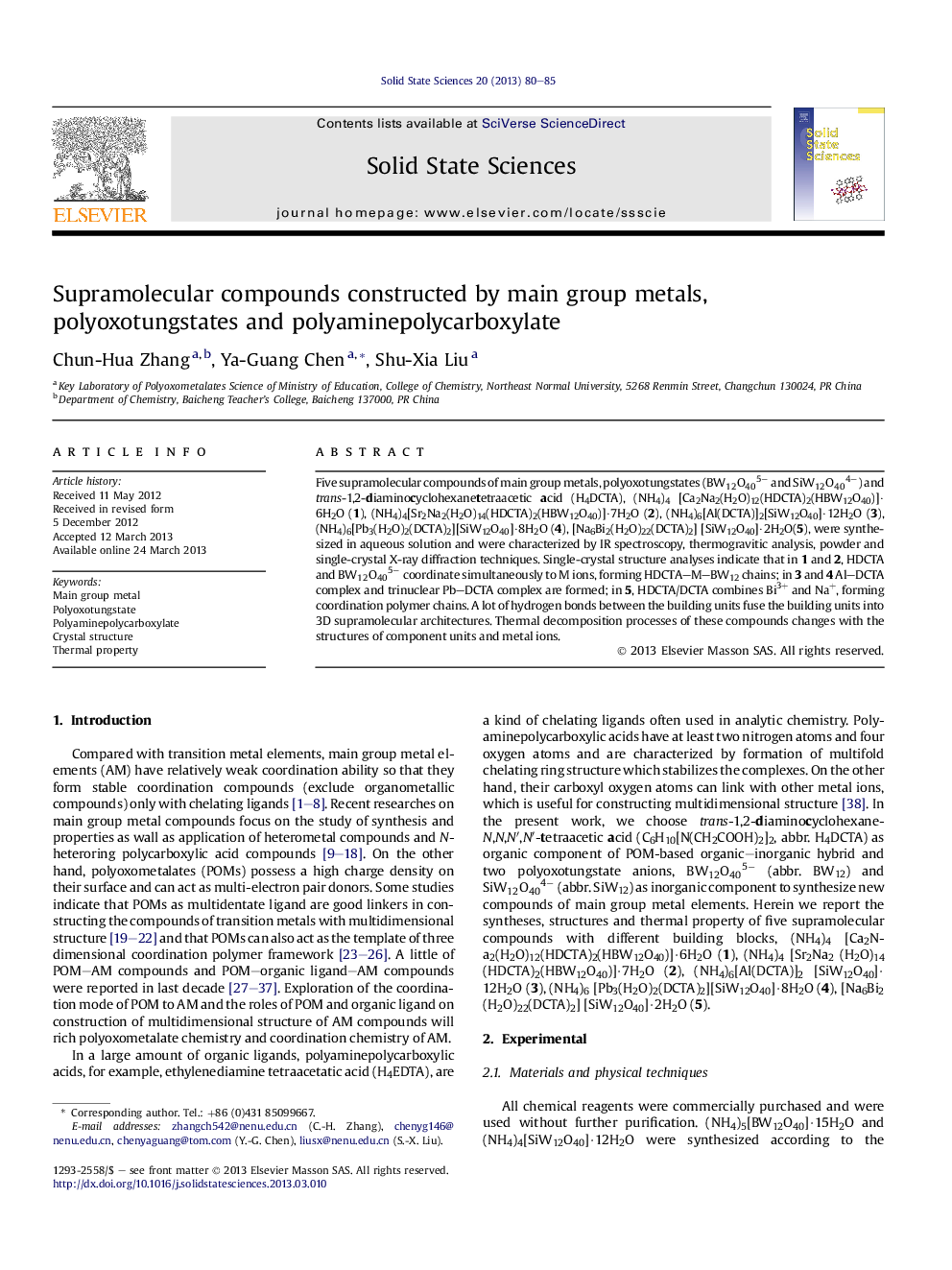| Article ID | Journal | Published Year | Pages | File Type |
|---|---|---|---|---|
| 1504648 | Solid State Sciences | 2013 | 6 Pages |
•Five new supramolecular compounds of main group metal ions were synthesized.•Main group metal ions form a coordination polymer chain, POM–M–DCTA.•Coordination mode of DCTA depends on the radius and charge of main group metal.•Thermal property of the compounds changes with the unit structures and metal ions.
Five supramolecular compounds of main group metals, polyoxotungstates (BW12O405−BW12O405− and SiW12O404−SiW12O404−) and trans-1,2-diaminocyclohexanetetraacetic acid (H4DCTA), (NH4)4 [Ca2Na2(H2O)12(HDCTA)2(HBW12O40)]·6H2O (1), (NH4)4[Sr2Na2(H2O)14(HDCTA)2(HBW12O40)]·7H2O (2), (NH4)6[Al(DCTA)]2[SiW12O40]·12H2O (3), (NH4)6[Pb3(H2O)2(DCTA)2][SiW12O40]·8H2O (4), [Na6Bi2(H2O)22(DCTA)2] [SiW12O40]·2H2O(5), were synthesized in aqueous solution and were characterized by IR spectroscopy, thermogravitic analysis, powder and single-crystal X-ray diffraction techniques. Single-crystal structure analyses indicate that in 1 and 2, HDCTA and BW12O405−BW12O405− coordinate simultaneously to M ions, forming HDCTA–M–BW12 chains; in 3 and 4 Al–DCTA complex and trinuclear Pb–DCTA complex are formed; in 5, HDCTA/DCTA combines Bi3+ and Na+, forming coordination polymer chains. A lot of hydrogen bonds between the building units fuse the building units into 3D supramolecular architectures. Thermal decomposition processes of these compounds changes with the structures of component units and metal ions.
Graphical abstractFigure optionsDownload full-size imageDownload as PowerPoint slide
